Genetic pet customization, designer pets 2050, futuristic pets, custom animal genetics, dna pet editing, crispr pets, designer dogs future, genetic engineering pets, bioengineered animals, create your own pet species, pet dna editing, designer cats 2050, genetic modified pets, custom pet labs, crispr cats, crispr dogs, futuristic pet ownership, biotechnology pets, glow in the dark pets, designer parrot genetics, genetic pet store future, engineered pets 2050, synthetic pets, build your own pet, dna modified animals, pet cloning future, futuristic pet breeds, genetic pets documentary, custom pets 2050, future animal technology, crispr pet design, genetically engineered pets, future dog breeds, custom parrot species, lab created pets, designer fish dna, genetic pet creation, future pet shops, crispr technology pets, bio pet labs future, create hybrid pets, animal dna editing, futuristic pet designs, design your own pet future, genetically customized animals, pet modification labs, genetic breeding future, synthetic biology pets, dna pet labs, engineered pet genetics, future hybrid pets, bioluminescent pets, pet dna science, designer turtles 2050, futuristic exotic pets, pet cloning labs, genetically programmed pets, dna modified species, designer hybrid animals, future of pets, biotechnology dogs, crispr engineered pets, pet dna modification, hybrid pets future, lab made pets, designer parrots, glowing pets dna, futuristic animal science, genetic modification animals, future pets prediction, dna engineered animals, custom pet species, crispr biotechnology pets, synthetic animal breeds, futuristic family pets, engineered exotic pets, dna edited dogs, glow in the dark cats, crispr futuristic pets, genetically designed pets, dna engineered cats, hybrid pet genetics, genetic evolution pets, pet dna design, engineered turtles, pet biotechnology future, futuristic pets science, genetic designer animals, crispr engineered dogs, dna pet programming, designer bio pets, dna hybrid animals, genetic dog breeds future, biotechnology cat design, future pet customization, dna edited parrots, bioengineering pets, custom pet dna science, crispr engineered animals, future designer pets 2050, dna reprogrammed animals, pet biotechnology industry, genetic engineered parrots, engineered hybrid dogs, futuristic pet labs, dna custom pets, genetic engineered cats, crispr glowing pets, biotechnology future pets, genetic science pets, future pet dna editing, lab created exotic pets, dna modified exotic animals, engineered pet cloning, futuristic pet market, genetic engineered hybrid pets, future animal dna science, biotechnology glowing pets, synthetic dna animals, futuristic pet lovers, pet dna labs 2050, engineered pet stores, custom dna pets future, future glowing cats, crispr glowing dogs, bioengineered hybrid pets, designer dna parrots, pet dna bio labs, futuristic exotic pet design, dna animal modification, engineered mini elephants, genetic designed turtles, futuristic pets 2070, dna modification in pets, custom engineered pets, biotechnology hybrid species, genetic glowing animals, pet dna engineering labs, designer pet hybrids, dna created exotic pets, future pet technology, genetically edited pets, bio custom pet stores, engineered pet dna future, dna glowing parrots, designer genetic cats, future biotechnology pets, crispr custom pets, engineered family pets, dna hybrid parrots, future pet science documentary, pet dna labs future, engineered dog species, future bioengineered animals, pet cloning 2050, custom glowing pets, biotechnology engineered cats, crispr glowing animals, genetically designed parrots, futuristic pet lab science, dna engineered turtles, designer animal dna, engineered futuristic pets, pet biotechnology predictions, dna designer pets, genetic engineered glowing animals, future pet design 2050, dna bioengineered cats, futuristic hybrid pet market, crispr engineered exotic pets, engineered glowing dogs, dna glowing exotic pets, biotechnology pet predictions, futuristic designer pets science, engineered pet bio labs, dna exotic animal design, genetic glowing turtles, future engineered animal species, custom dna exotic pets, crispr designed parrots, engineered glowing cats, futuristic pet dna bio labs, biotechnology glowing dogs, dna engineered glowing parrots, engineered pet biotechnology labs, custom dna glowing pets, future engineered exotic animals, genetic designed dogs, crispr engineered glowing cats, future biotechnology exotic pets, engineered hybrid parrots, dna glowing turtles, engineered exotic pet labs, genetic bio engineered animals, futuristic dna pet predictions.
Category: bioengineering – Page 11

Building a Synthetic Cell Together
Synthetic cells are artificial constructs designed to mimic cellular functions, offering insights into fundamental biology, as well as promising impact in the fields of medicine, biotechnology, and bioengineering. In this perspective, the authors highlight major scientific hurdles, such as the integration of functional modules by ensuring compatibility across diverse synthetic subsystems, and propose strategies to advance the field.
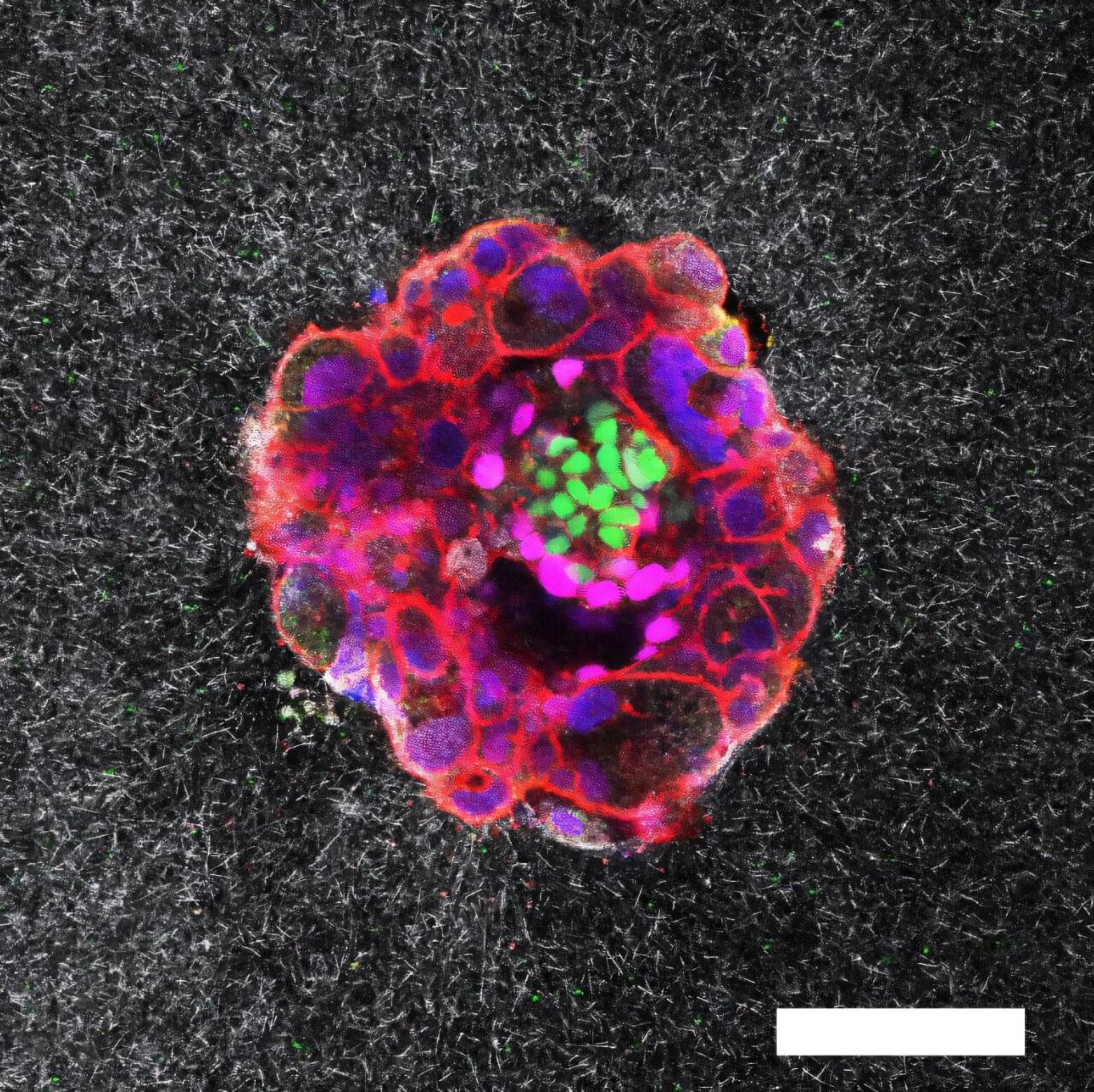
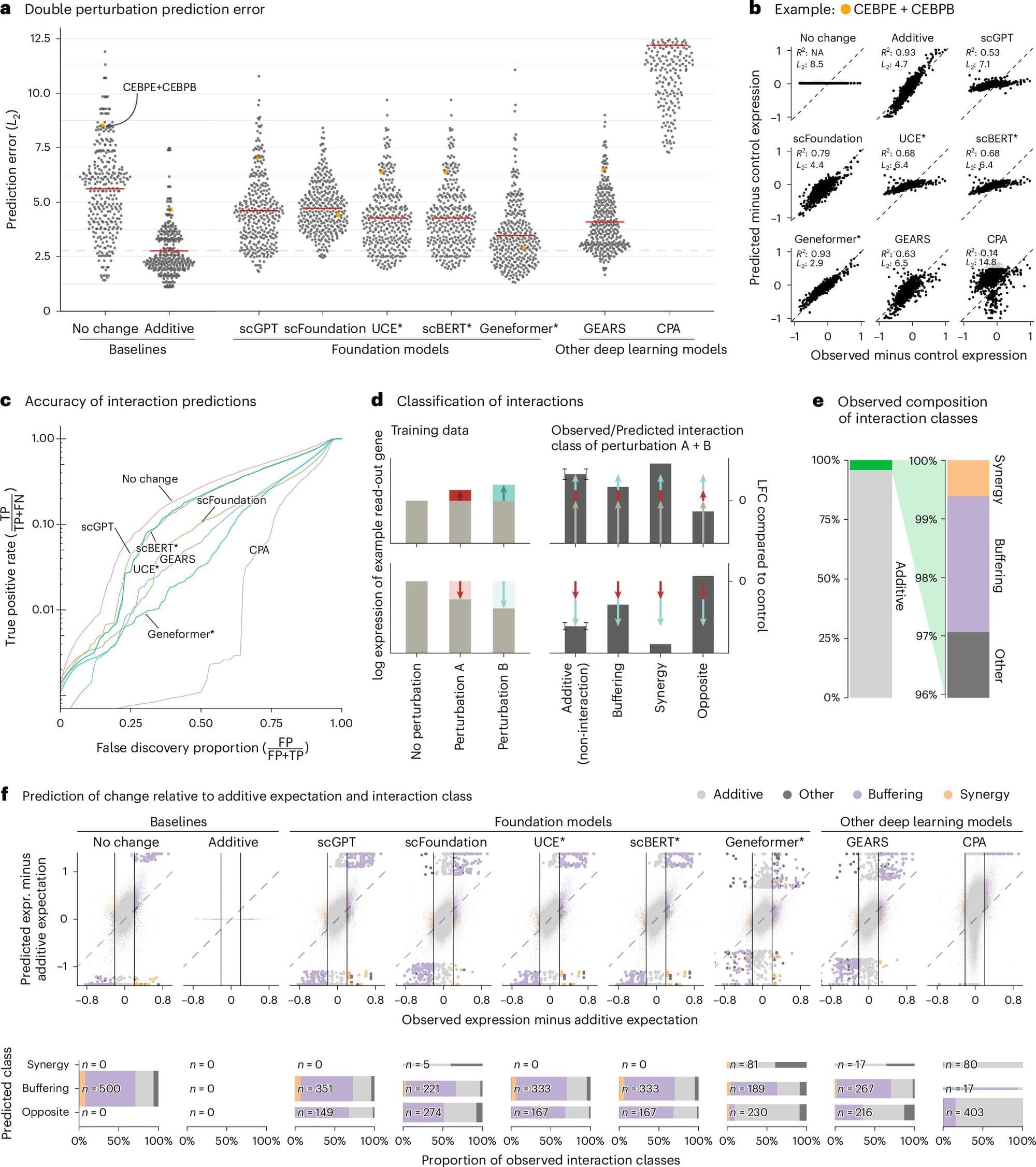

Scientists Invent Plastic That Nature Eats 2,800 Feet Underwater
Scientists have unveiled a new biodegradable plastic that vanishes in one of the harshest environments on Earth—the deep sea.
In an experiment nearly 3,000 feet underwater, a bioengineered material called LAHB broke down while conventional plastics stayed intact. Deep-sea microbes not only colonized the plastic’s surface, but actively digested it using specialized enzymes, turning it into harmless byproducts. This breakthrough suggests a promising solution to the global plastic crisis, especially in oceans where most waste lingers for decades or centuries.
Global plastic waste problem still looms.

New Study Suggests Cancer Drug Could Be Used to Target Protein Connection That Spurs Parkinson’s Disease
In studies with genetically engineered mice, Johns Hopkins Medicine researchers say they have identified a potentially new biological target involving Aplp1, a cell surface protein that drives the spread of Parkinson’s disease-causing alpha-synuclein.
The findings, published May 31 2024 in Nature Communications, reveal how Aplp1 connects with Lag3, another cell surface receptor, in a key part of a process that helps spread harmful alpha-synuclein proteins to brain cells. Those protein buildups are hallmarks of Parkinson’s disease.
Notably, the researchers say, Lag3 is already the target of a combination cancer drug approved by the U.S. Food and Drug Administration (FDA) that uses antibodies to “teach” the human immune system what to seek and destroy.

Equipping living cells with logic gates to fight cancer
One of the most exciting developments in cancer treatment is a wave of new cell therapies that train a patient’s immune system to attack cancer cells. Such therapies have saved the lives of patients with certain aggressive cancers and few other options. Most of these therapies work by teaching immune cells to recognize and attack specific proteins on the surface of cancer cells.
Unfortunately, most proteins found on cancer cells aren’t unique to tumors. They’re also often present on healthy cells, making it difficult to target cancer aggressively without triggering dangerous attacks on other tissue. The problem has limited the application of cell therapies to a small subset of cancers.
Now Senti Bio is working to create smarter cell therapies using synthetic biology. The company, which was founded by former MIT faculty member and current MIT Research Associate Tim Lu ’03, MEng ’03, PhD ’08 and Professor James Collins, is equipping cells with gene circuits that allow the cells to sense and respond to their environments.
Founded by MIT researchers, Senti Bio is is working to create smarter cell therapies for cancer using synthetic biology. The company equips cells with gene circuits that allow the cells to respond to their environments.
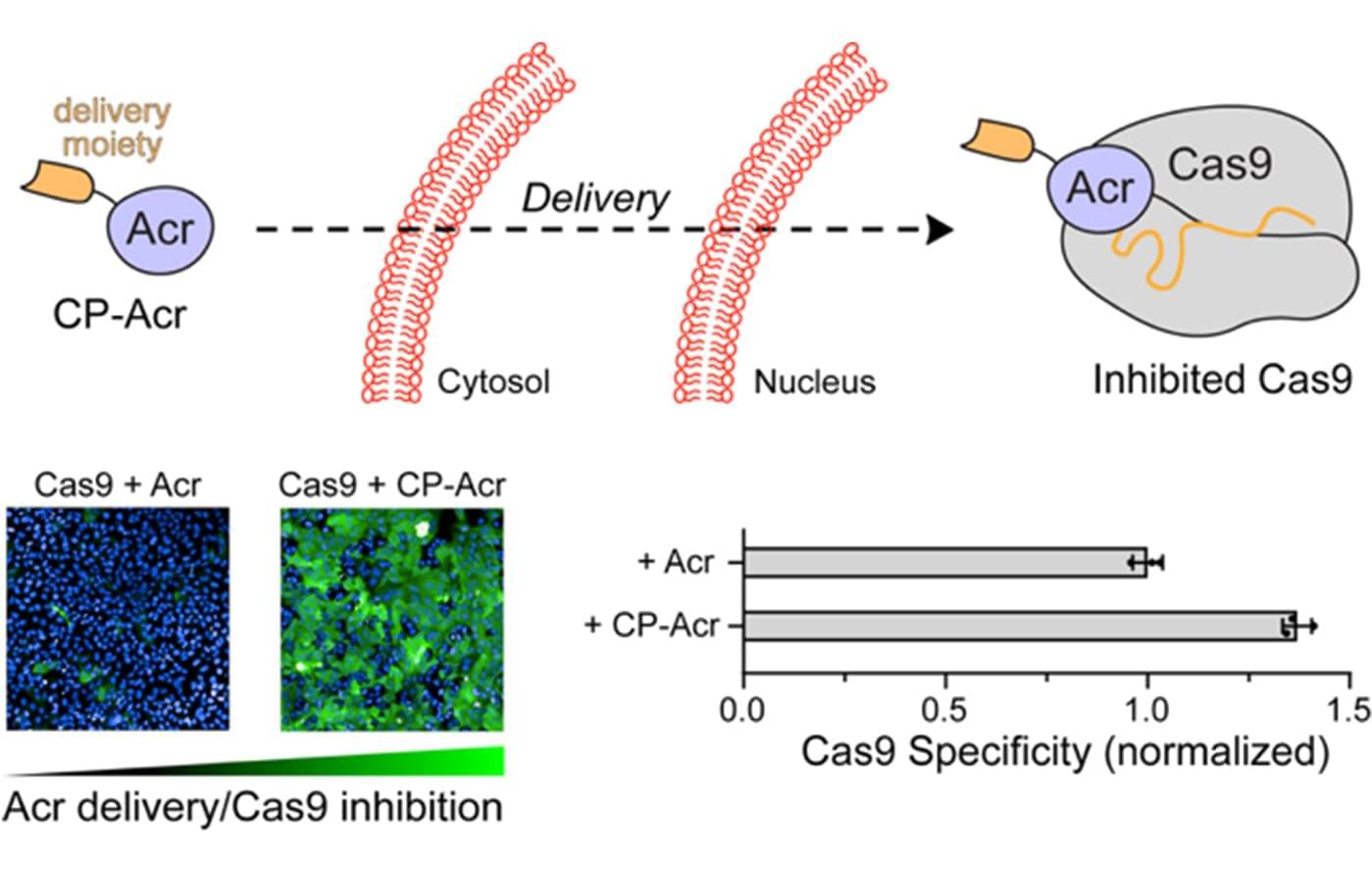
A Boost for the Precision of Genome Editing
The FDA’s recent approval of the first CRISPR-Cas9–based gene therapy has marked a major milestone in biomedicine, validating genome editing as a promising treatment strategy for disorders like sickle cell disease, muscular dystrophy, and certain cancers.
CRISPR-Cas9, often likened to “molecular scissors,” allows scientists to cut DNA at targeted sites to snip, repair, or replace genes. But despite its power, Cas9 poses a critical safety risk: the active enzyme can linger in cells and cause unintended DNA breaks—so-called off-target effects—which may trigger harmful mutations in healthy genes.
Now, researchers in the labs of Professor Ronald T. Raines (MIT Department of Chemistry) and Professor Amit Choudhary (Harvard Medical School) have engineered a precise way to turn Cas9 off after its job is done—significantly reducing off-target effects and improving the clinical safety of gene editing. Their findings are detailed in a new paper published this week in the Proceedings of the National Academy of Sciences (PNAS).
Researchers used cells that glow green due to a green fluorescent protein (GFP) gene. If Cas9 is working, it disrupts the GFP gene and the cells stop glowing. If LFN-Acr blocks Cas9, the cells keep glowing. These images depict cells in different conditions: some with active Cas9 (which stopped the green glow), some with Cas9 and LFN-Acr (glow stayed on).
Image courtesy of the researchers.
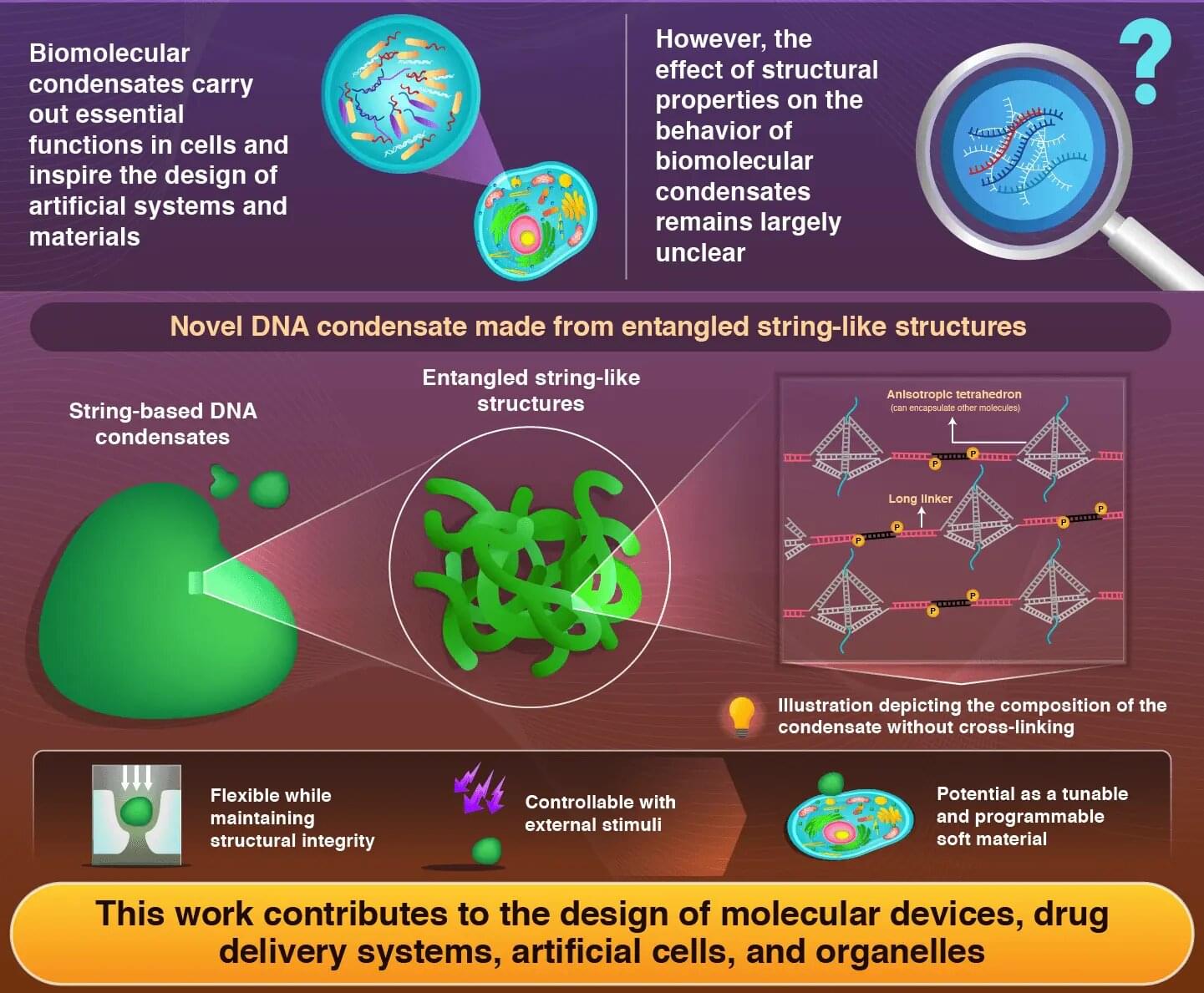
DNA nanostructures can mimic molecular organization of living systems without chemical cross-linking
Newly developed DNA nanostructures can form flexible, fluid, and stimuli-responsive condensates without relying on chemical cross-linking, report researchers from the Institute of Science Tokyo and Chuo University, in the journal JACS Au.
Owing to a rigid tetrahedral motif that binds the linkers in a specific direction, the resulting string-like structures form condensates with exceptional fluidity and stability. These findings pave the way for adaptive soft materials with potential applications in drug delivery, artificial organelles, and bioengineering platforms.
Within living cells, certain biomolecules can organize themselves into specialized compartments called biomolecular condensates. These droplet-like structures play crucial roles in cellular functions, such as regulating gene expression and biochemical reactions; they essentially represent nature’s clever way of organizing cellular activity without the need for rigid membranes.
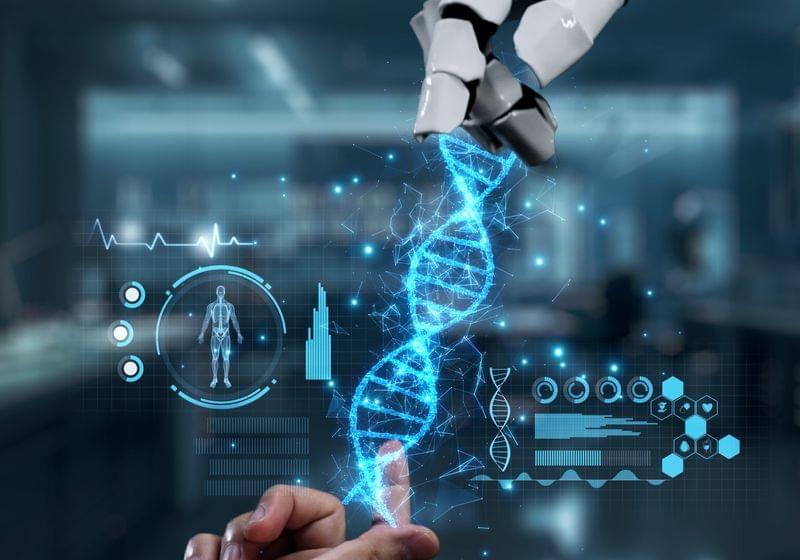
CRISPR-GPT Turns Novice Scientists into Gene Editing Experts
CRISPR technology has revolutionized biology, largely because of its simplicity compared to previous gene editing techniques. However, it still takes weeks to learn, design, perform, and analyze CRISPR experiments; first-time CRISPR users often end up with low editing efficiencies and even experts can make costly mistakes.
In a new study, researchers from Stanford University, Princeton University, and the University of California, Berkeley, teamed up with Google DeepMind to create CRISPR-GPT, an artificial intelligence (AI) tool that can guide researchers through every aspect of CRISPR editing from start to finish in as little as one day.1 The results, published in Nature Biomedical Engineering, demonstrate that researchers with no previous CRISPR experience could achieve up to 90 percent efficiency in their first shot at gene editing using the tool.
CRISPR-GPT is a large language model (LLM), a type of AI model that uses text-based input data. Led by Le Cong of Stanford University and Mengdi Wang of Princeton University, the team trained the model on over a decade of expert discussions, as well as established protocols and peer-reviewed literature. They designed it to cover gene knockout, base editing, prime editing, and epigenetic editing systems, and benchmarked the tool against almost 300 test questions and answers.